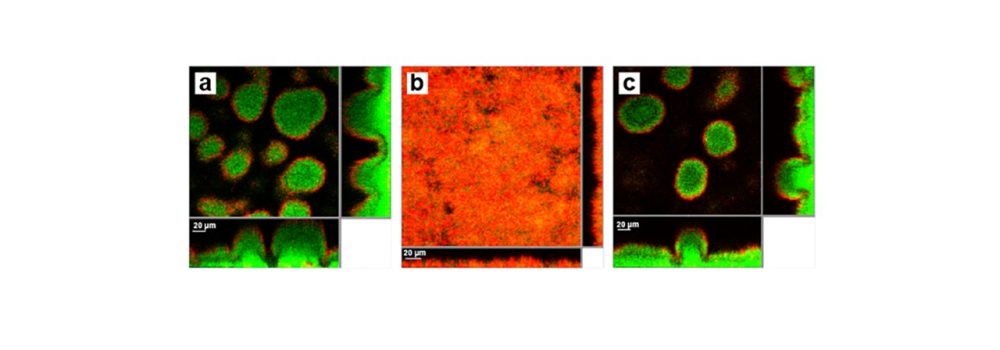
A collaboration with the teams of Tim Tolker-Nielsen (University of Copenhagen), Paul Williams (University of Nottingham), Sophie Bleves and Bérengère Ize (LISM-Marseille) led to the discovery of a new mechanism to control the release of extracellular DNA (eDNA) in Pseudomonas aeruginosa.
Pseudomonas aeruginosa is a highly adaptable bacterial pathogen responsible for severe acute and chronic human infections including many associated with biofilms. The biofilm extracellular matrix incorporates extracellular DNA (eDNA) that stabilizes biofilm architecture and confers tolerance to antibiotics. From a transposon mutagenesis screen for mutants exhibiting defective eDNA release that may be pqs system controlled, we obtained transposon insertions that mapped to the first two genes in the tatABC operon that codes for the twin arginine translocase (Tat) protein secretion pathway. The Tat system exports folded proteins out of the cytoplasm and across the cytoplasmic membrane in an ATP-independent manner. Here we show that disruption of Tat substantially reduces eDNA release and results in the formation of defective P. aeruginosa biofilms susceptible to antibiotic treatment. The auhtors discovered that the eDNA release defect in the tat mutants was a consequence of a perturbation in pqs signalling such that biofilm extracellular matrix components including eDNA, phenazines and rhamnolipids as well as microvesicles that contribute to pqs signalling are not released or produced.
By Eliza Ye-Chen Soh, Frances Smith, Maxime Rémi Gimenez, Liang Yang, Rebecca Munk Vejborg, Matthew Fletcher, Nigel Halliday, Sophie Bleves, Stephan Heeb, Miguel Cámara, Michael Givskov, Kim R Hardie, Tim Tolker-Nielsen#, Bérengère Ize#, Paul Williams#
Read full paper here
Published on 30/08/2021
